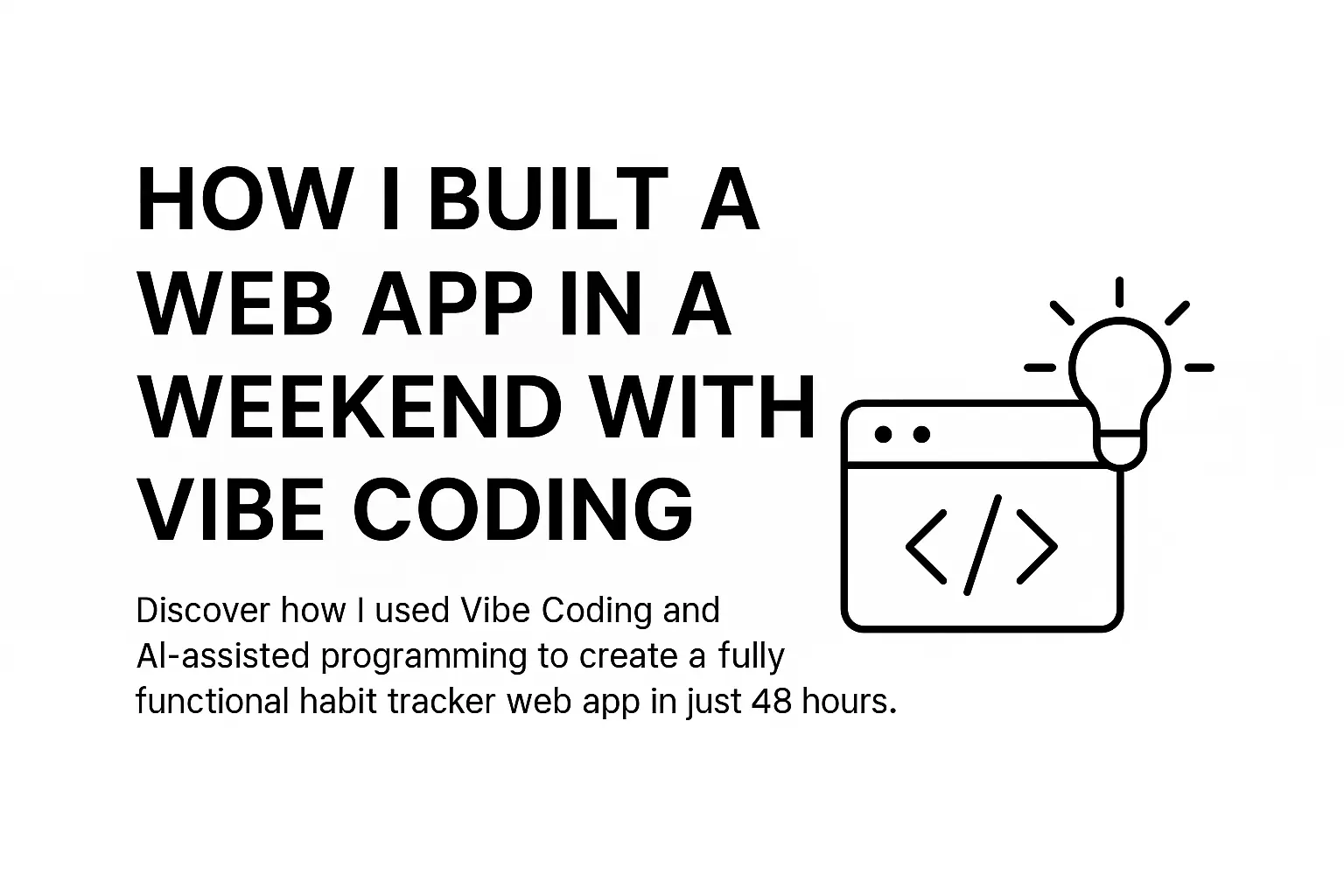How I Built a Web App in a Weekend with Vibe Coding

Discover how I used Vibe Coding and AI-assisted programming to create a fully functional habit tracker web app in just 48 hours. This step-by-step guide covers the process, tools, and lessons learned, showing you how to leverage AI to build apps fast—no stress, just creativity.
Learn how Vibe Coding, an AI-assisted programming technique, helped me build a habit tracker web app in one weekend. Follow my process, tools, and tips to create your own app!
What is Vibe Coding?
Vibe Coding is an AI-assisted programming approach that lets you describe your project in plain English, while AI generates the code. Coined by Andrej Karpathy in 2025, it’s about collaborating with AI to scaffold, test, and deploy software quickly. As Karpathy puts it: “See stuff, say stuff, run stuff, copy-paste stuff.”
With Vibe Coding, you focus on the vision—AI handles the grunt work. It’s perfect for rapid prototyping and empowering beginners to dive into AI-assisted programming.
Vibe Coding accelerates development by automating repetitive tasks, letting you focus on creativity and logic.
The Idea: A Simple Habit Tracker
My goal was to build a user-friendly habit tracker web app with Vibe Coding. The app needed to:
- Allow users to log daily habits.
- Display habit streaks.
- Send basic reminders.
This minimal viable product (MVP) kept the project focused and achievable in a weekend.
The Tech Stack (Powered by AI)
Using AI-assisted programming, I let AI recommend the stack:
- Frontend: Next.js + TailwindCSS for a fast, responsive UI.
- Backend: Node.js (Express) + Prisma (SQLite) for data management.
- Authentication: NextAuth.js for secure user logins.
- Hosting: Vercel (frontend) + Railway (backend) for easy deployment.
I prompted ChatGPT: “What’s the fastest stack for a habit tracker web app with auth?” The AI’s suggestions saved hours of research.
Step-by-Step: Building with Vibe Coding
Here’s how I used Vibe Coding and AI-assisted programming to build the app in 48 hours:
1. Define the MVP
I asked the AI: “List the core features for a basic habit tracker.” It returned:
- User authentication.
- Add/Edit/Delete habits.
- Mark habits as completed.
- View streaks.
This became my roadmap.
2. Scaffold the Project
Instead of hunting for boilerplate, I prompted: “Generate a Next.js project with TailwindCSS and NextAuth.js for authentication.” The AI provided terminal commands and code snippets. In 30 minutes, my frontend was ready.
3. Build the Backend
For the backend, I requested: “Generate Express server code with Prisma and SQLite for storing habits and users.” The AI delivered:
- Prisma models for
UserandHabit. - REST API routes for CRUD operations.
I tested the APIs with Postman—everything worked seamlessly.
4. Connect Frontend to Backend
I asked: “How do I connect my Next.js frontend to my Express backend on Railway?” The AI gave clear instructions for:
- Setting up API endpoints.
- Using
fetchto call the backend.
5. Style with TailwindCSS
To make the UI look polished, I prompted: “Style my habit list with TailwindCSS for a clean, responsive design.” The AI generated CSS classes, resulting in a sleek interface with minimal effort.
6. Deploy the App
Deployment was a breeze with Vibe Coding:
- Frontend: Pushed to Vercel with one-click GitHub integration.
- Backend: Deployed on Railway using CLI, with AI-guided environment variable setup.
The Result: A Habit Tracker in 48 Hours
Using Vibe Coding and AI-assisted programming, I built a functional habit tracker in one weekend. Here’s what made it work:
- AI automated boilerplate and scaffolding, saving hours.
- I focused on logic and design, not syntax hunting.
- Rapid iteration kept the project stress-free.
Lessons Learned from Vibe Coding
- AI is a Partner: Review and debug AI-generated code to ensure quality.
- Focus on the Vibe: Describe your app’s feel—AI translates it into code.
- Ship Fast: Prioritize a usable product over perfection.
Always test AI-generated code thoroughly, as Vibe Coding may miss edge cases.
What’s Next for the App?
I’m planning to enhance the habit tracker with:
- Push notifications for reminders.
- Analytics to track user engagement.
- AI-generated personalized habit suggestions.
Try Vibe Coding Yourself!
Ready to build your own app with Vibe Coding? Challenge yourself:
- Pick a simple project idea.
- Use tools like Cursor or ChatGPT for AI-assisted programming.
- Follow the vibe—let AI handle the heavy lifting.